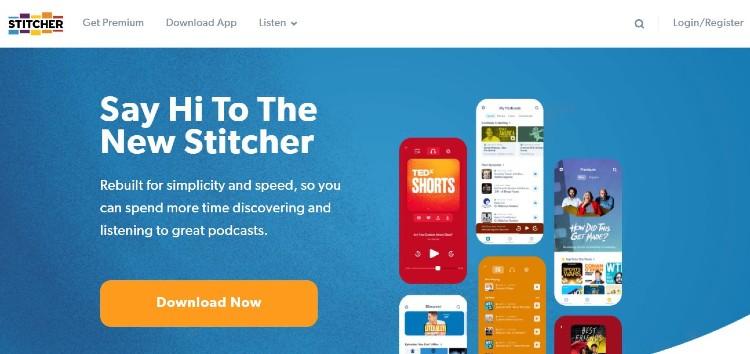More and more people are spending time listening to podcasts. It’s projected that by the end of 2025, there will be more than 144 million podcast listeners. The sheer number of people reached by this medium shows the viability of using podcasts to promote your brand or become an authority in your chosen niche.
There are plenty of ways to market your podcast. But to stand out from the multitude of content creators, you need to find ways to do it professionally to ensure the success of your campaign.
So, in this article, you’ll go through nine pro tips to ensure podcast marketing success:
1. Create Your Listener Persona
In any marketing effort, the first step will always include the creation of your ideal audience persona or ideal listener persona in the podcasting world. The listener persona is a guide you can use to connect with your target listener. It describes their behavior, likes, dislikes, where they live, what level of education they’ve reached, where they hang out, and other similar relevant details.
Knowing your audience on a more profound level means knowing their pain points and aspirations—factors you can explore when creating your content. Through the listener persona, you get to add value to your audience’s life as they go through the journey from being a stranger to your podcast until they get converted into a loyal follower.
2. Tap Into Your Guests’ Audience
Establishing your authority in your chosen podcasting niche can be challenging, especially if you rely only on yourself to generate content. An excellent way to expand the scope of your product is to ask guests over.
Aside from benefiting from your guest’s experience and background, you also expand your network by tapping into your guest’s followers. Imagine inviting a micro-influencer to your show. Part of the content they’ll be producing would be teasers or even live streams of them going on your show. Since they interact with you, there’s a high chance that some of their followers will also follow you back since the topics or themes you discuss on your podcast are connected to the niche of your guest.

3. Maximize Social Media Use
Another easy way to reach your marketing goals is to maximize the value of social media platforms. Unlike traditional marketing efforts, which require a huge budget, social media marketing is relatively more affordable.
Signing up on social media is free and repurposing your content as bite-sized posts also works well in promoting your podcast. Another thing that social media can do for your podcast is that it helps you create visual content to engage your audience.
If you’re wondering how to do this, here are some quick examples:
Shareable Guides And Infographics
Social media is a great platform to put out visually appealing guides your audience can follow. You can create infographics related to the case studies or topics you discussed to add more information you couldn’t tackle on your podcast episodes. These posts should feature your podcast’s name to ensure you get exposure every time your content is shared.
Create Podcast Audiograms
Audiograms are short soundbites designed with a static image as a background. Ideas usually include the podcast show’s name, the host, and their guests. This short audio is used to hook target listeners by sharing an exciting part of an upcoming interview or a previous episode.
Convert Audio To Video
Another way you can leverage social media is by converting your podcast episodes to a video and posting them on YouTube. Adding your content on this platform also helps you with your SEO efforts. More published content that leads back to you and your channel leads to a higher probability of new listeners finding your show when they search for particular topics on search engines.
Livestream For Engagement
One of the highly utilized marketing activities content creators do these days is to stream events since this type of activity increases your reach in just a few clicks. Livestreaming while recording your podcast episode is like watching radio DJs in action. It offers a peek of a podcaster’s behind-the-scenes preparation (BTS) and shows a bit of rawness from behind the mic.
Podcast recording software, which has live streaming options, is a good solution for aiming for multichannel sharing while doing live videos instead of hiring another person to do the job. Using an app instead of hiring another person means less expense on your side and a more hands-on approach to your podcast promotion efforts.
4. Add Value With Show Notes
Show notes are an overview of what was talked about on a podcast episode. This space is also used to put in links that lead to additional resources your audience can use to learn more about the topic you tackled.
Your show notes can also be where you add promotional codes or link back to your website and your guests’ or sponsor’s website. Some podcasters also include their transcriptions here to increase their searchability online. Episode transcripts increase the published content that search engine bots can ‘crawl’ on.

5. Calls To Action
Another thing marketers can include in podcasts is calls to action (CTAs). CTAs are clear and concise instructions you give your audience to get them to take the action you want them to do.
An example of a CTA is to ask them to tag their friends to join a raffle, follow your guest on social media, subscribe to your Facebook group, or join your newsletter. These calls to action should be specifically designed to move your audience from the top of your sales funnel to the bottom, where they’re converted into your podcast’s loyal fans.
6. Start Your Newsletter
A podcast’s newsletter should contain additional content to engage your listeners. Newsletters are a great way to make your subscribers feel special by offering them exclusive discounts, freebies, or other opportunities you can share to strengthen the community you’re building.
Newsletters are an excellent way to advertise and promote your podcast since you already have a captured audience in the form of your mailing list. Moreover, you can even help your subscribers earn passively just by sharing your products or services through email, their blogs, or their social media accounts.
7. Giveaways
Hosting giveaways is another marketing effort you can do for your podcast. Giveaways are tangible ways to give back to your audience while promoting your podcast sponsors and advertisers. It shouldn’t cost a lot, especially if the products or services you offer are given by your partners or are already part of your traditional marketing expenses.
8. Include Links In Your Email Signature
Don’t forget your email signature links. A subtle way to market and promote your brand is to always link to your podcast channel, blog, or website. This simple and overlooked marketing effort can also give you opportunities to reach new people every time you communicate via email.

9. Use Podcast Aggregators
Podcast aggregators are like channels where you submit your podcast show host’s RSS feed link so listeners can gain access to your existing feed. Sites like iTunes, TuneIn, and Sticher are examples of aggregators with minimal to no current fees.
There’s a wide range of podcast aggregators you can use, which means you get more channels to market your podcast with negligible expense.
Key Takeaways
Creating a podcast isn’t an easy task. It takes a lot of effort to commit to this kind of endeavor and be successful at it. With the growing number of podcast shows, it’s necessary to learn how professionals market their shows to realize your objective in podcasting.
Using a multichannel approach in marketing, leveraging on your guest’s following, and making sure every type of communication you send out links back to your podcast are just some of the ways you can ensure your marketing campaign succeeds.


